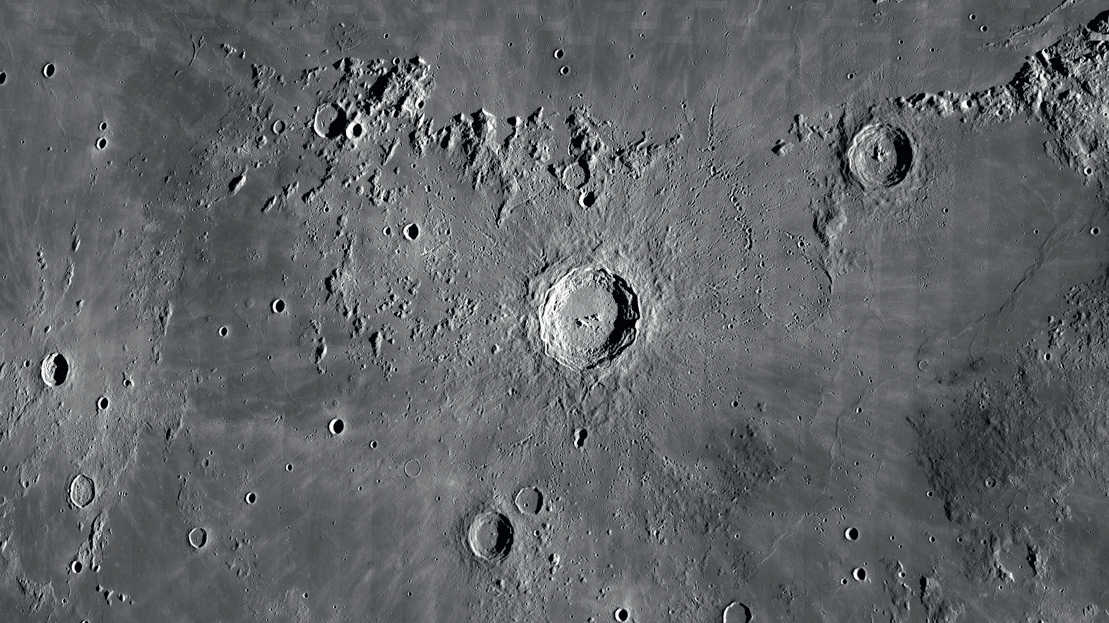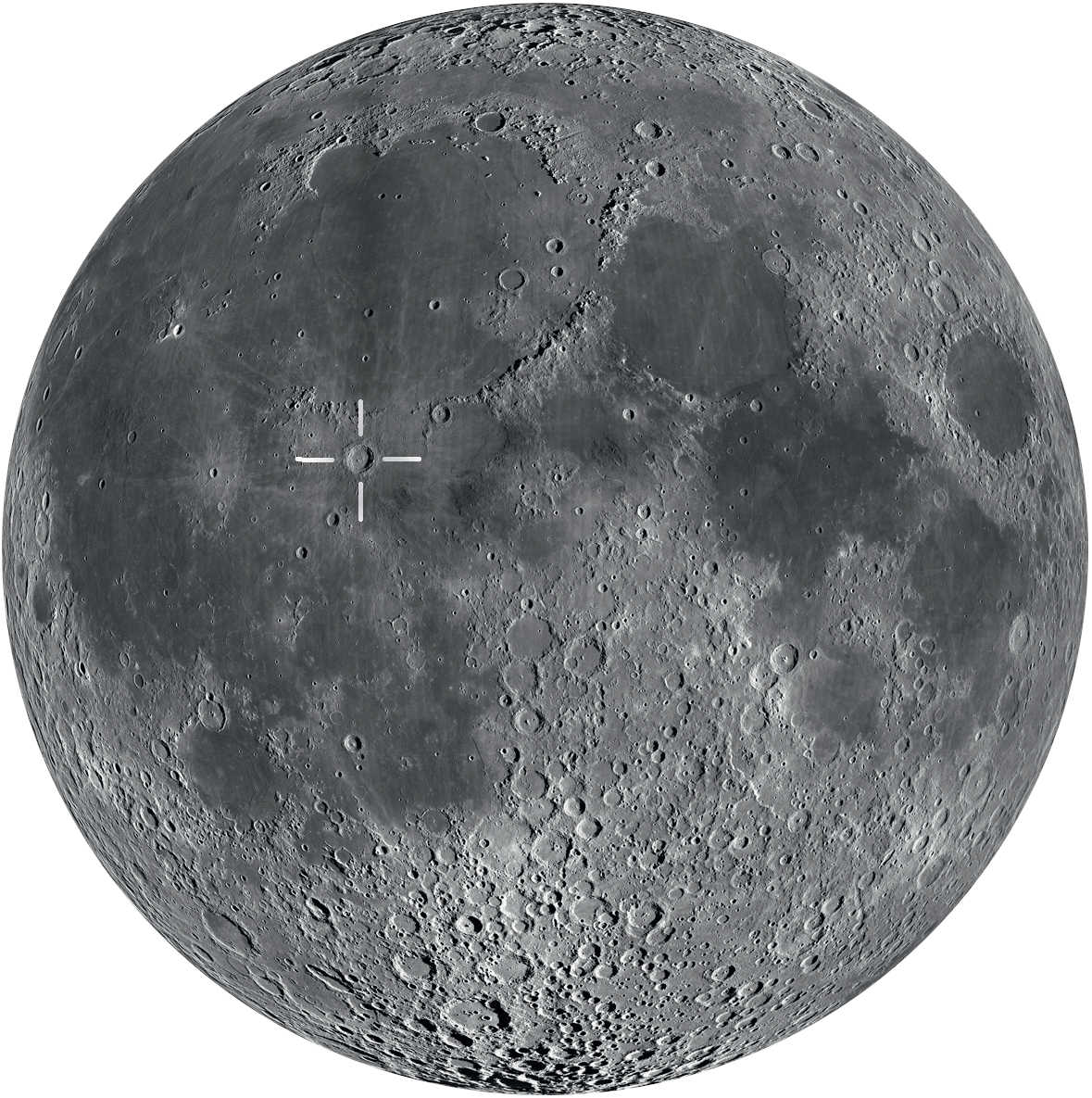The monarch of the lunar craters
Many observers describe Copernicus as the most beautiful of all the lunar craters - a visit with a telescope quickly reveals why.
 Many observers describe Copernicus as the most beautiful of all the lunar craters.
Many observers describe Copernicus as the most beautiful of all the lunar craters.Lunar craters with a diameter of around 20km to 100km are known as mountain rings. These craters have a uniform and clearly defined wall. Inside the crater, the slopes are usually terraced and the floor is dominated by a central mountain which can vary in size. Copernicus is a particularly beautiful example of a mountain ring. Anyone who pays it a visit with a telescope will very quickly understand why.
At sunrise
Shortly after the first quarter Moon, around nine days after the new Moon, sunrise begins over the 93km wide and 3,800m deep mountain ring. The sight is already worth seeing at this stage, because the slopes of the east wall emerge as a bright semicircle from the still unlit crater floor. As the sunrise advances, step by step, the slope emerges into the sunlight. Finally, the peaks of the two central mountain ranges appear as bright points of light on the still dark crater floor. If patience and conditions allow, it’s well worth observing the spectacle over the course of the next few hours.
When the sun is at a higher position and the crater is almost fully illuminated, the outline of Copernicus is striking: it’s more like octagonal than round. When you look more closely, you can see that the structure of the crater's floor appears to be divided into two parts. The southern half is covered by a large number of small mounds, while the north is much flatter.
Bright garland of rays
 Copernicus is located near the centre of the Moon. It’s best observed from just after the first quarter through to just before the full Moon.
Copernicus is located near the centre of the Moon. It’s best observed from just after the first quarter through to just before the full Moon.When the sun is at its highest position at around full Moon, Copernicus' distinct ray system can be seen in its entirety. Copernicus, at the age of just 800 million years, is a relatively young crater and the rock ejected during the impact when the crater was formed is still very pale. Over time, this ejected material matures and becomes darker and is eventually indistinguishable from the substrate.
The best way to observe the ray system is by using low magnification, so that the entire lunar disk remains visible in the eyepiece. Single rays reach a distance of 700km, and in the west they overlap with the ray system of the smaller Kepler crater.
Looking more closely
If the seeing is good, it is worth examining the area surrounding Copernicus at higher magnification. Here you can see a large number of impact points of different sizes, which are grouped into chains, loops and clusters. These craters were caused by rocks expelled during the formation of Copernicus. These impact points are also referred to as secondary craters. A chain of overlapping secondary craters directly to the northeast of Copernicus is particularly striking.
Best visibility 9 or 22 days after New Moon
Author: Lambert Spix / Licence: Oculum-Verlag GmbH
